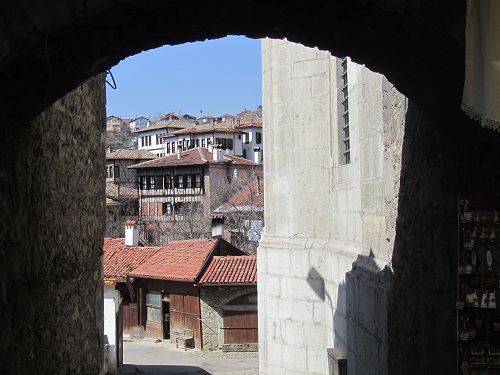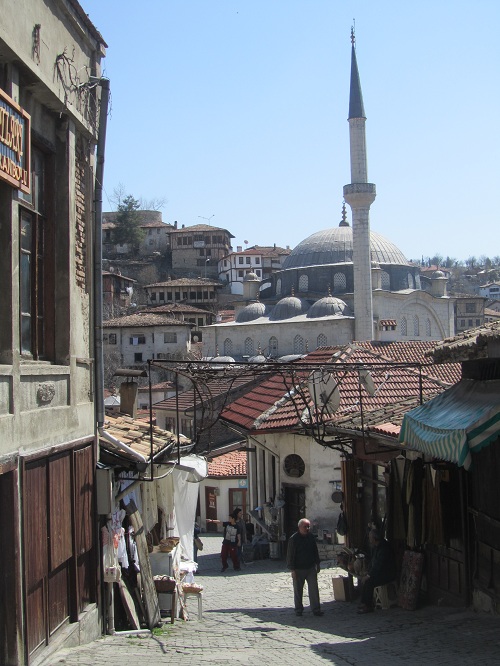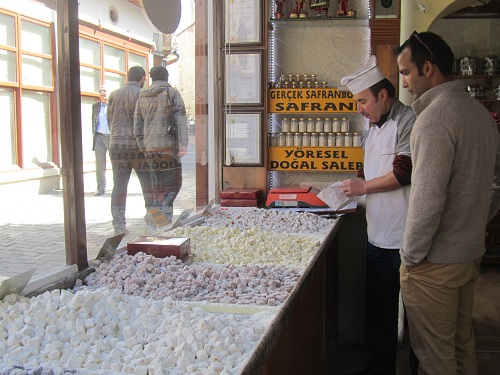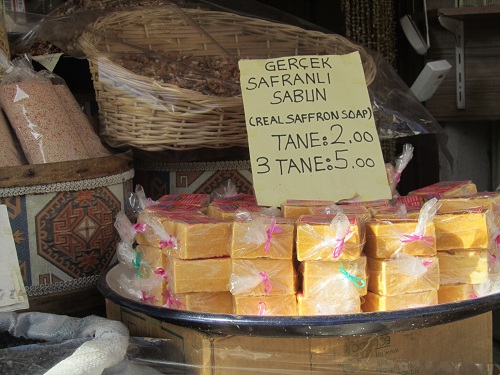I’ve never been a big fan of saffron. I think its soapy taste destroys dishes. When we decided to spend two nights in the Black Sea town of Safranbolu, it was for the town’s laid back feel and architecture, not because it has been a centuries old center for saffron cultivation and trading.

UNESCO put its World Heritage Center stamp on Safranbolu for its preservation of traditional Ottoman architecture and culture. As an important caravan station on the East-West trade route, Safranbolu prospered and set a high bar for Ottoman style. We spent an entire day meandering the narrow streets, admiring the old houses, mosques, and hammam, while sipping tea and snacking on local pastries.

Even though we didn’t come for the saffron, we couldn’t escape it. Saffron is sold everywhere and in every form in the alleys of Safranbolu. There’s saffron Turkish delight, which Sandeep’s brother bought along with other exotic flavors such as rose and pistachio.

Saffron is supposed to be very good for hair and skin and there is every variety of beauty product on sale, from saffron oil to saffron soap.

Naturally, there is saffron itself, which is used in a variety of savory and sweet dishes throughout Asia, the Middle East and Europe. We weren’t here for the saffron but it was hard not to participate in the saffron exuberance. Dinner led to a turning point. We went to Kadioglu Sehzade Sofrasi, a restaurant specializing in local cuisine and ordered one of almost everything on the menu. Our dessert options were baklava or saffron pudding. Not ones to miss dessert, we caved in for the pudding. According to the people of Safranbolu, one has not lived until trying the town’s safranli zerde. I figured if anything changed my opinion on saffron, this would be it.
Sadly, to me, it still tasted like a spoonful of soap, albeit with a healthy dose of sugar. The kids didn’t much care for it either and, I suppose rather offensively, we left most if the dish untouched. While we weren’t saffron converts, we did leave Safranbolu with a lot of saffron knowledge.
– Saffron threads are the stigma of the purple saffron crocus flower. These are tediously handpicked and air dried.
– Like diamonds, saffron have grades. The grades are based on color, taste and fragrance.
– At $ 100,000 a kilogram, the spot price of saffron from Safranbolu is double that of gold. A pinch of saffron will take you further than a few gold flakes, though.
– Saffron has supposed medicinal functions including serving as an anti-depressant and immune system modulator.
We try to keep open minds when we travel, but sometimes prejudices and tastes, like my dislike for saffron, can get in the way. I was determined to avoid the spice and instead ended up fascinated by all the hype. That’s the great thing about travel, it forces you to experience new things, even if you don’t always end up loving them.
If you are a saffron fan, try out this recipe for safranli zerde.
1/4 cup short grain rice, soaked and drained
6 cups water
3/4 cup sugar
1/2 teaspoon saffron soaked in a little warm water
Thickening agent, such as 3 tablespoons dissolved cornstarch
Boil the rice with half the water until just done. Drain. Boil the sugar with the remaining water. Turn down the heat to a simmer and add the rice, saffron and saffron water, and thickening agent. Stir just until it starts to bubble. Dish out into serving bowls and chill in the fridge. Serve cold.
